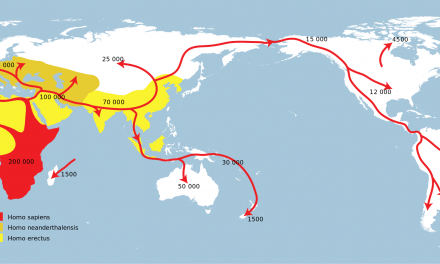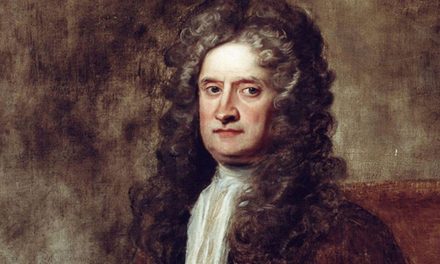Electricity and Electromagnetism – Part 2
The beginning of electricity’s modern era can be traced to a small Danish classroom in 1820. There, in front of a room full of physics students, Hans Christian Oersted (1777–1851) discovered that electricity can produce magnetic fields. Oersted was the son of a Danish pharmacist, and he had planned to follow his father’s profession, but he became captivated by electrical studies in 1800. He gained great popularity as a science lecturer and was given a professorship at the University of Copenhagen in 1806. In 1820, Oersted hooked up a coil of wire to a battery and passed a current through the coil. He observed that a compass needle next to the coil moved whenever the circuit was closed. Prior to Oersted, electricity and magnetism were viewed as two separate phenomena, involving very different kinds of physical conditions. Oersted’s work unified the study of electromagnetism.
Oersted’s discovery led to a number of important inventions, because it provided a way to convert electrical potential energy into magnetic and kinetic energy. The electromagnet was the first application of this effect. In a buzzer, for example, a flexible magnetic piece, acting as a switch, repeatedly hits a metal plate as the circuit opens and closes. This principle is used in the telegraph. Electric motors use electromagnets to develop a magnetic push pull between a rotor and its casing. Scientists expect the physical world to display order and symmetry. Since moving electricity induces a magnetic field, then moving magnets should induce electricity. This effect was demonstrated by the British physicist Michael Faraday (1791–1867) in 1831. Faraday, the son of a blacksmith, was apprenticed to a London bookseller. Faraday began to read and became entranced by science. After attending a public lecture series by the famous Humphry Davy, Faraday transcribed his lecture notes, bound them beautifully, and presented them to Davy as his calling card. He was soon employed as Davy’s assistant, and he flowered into a distinguished scientist. His contributions are even more remarkable given his lack of formal education.
In his famous experiment, Faraday attached one coil of wire to a battery, thus creating a magnetic field. Next to this coil he placed a second coil of wire in a circuit. Even though the second coil was not attached to any source, a strong current flowed. Faraday concluded that the magnetic field produced by the first circuit induced the current in the second circuit the phenomenon of electromagnetic induction.
The demonstration that moving magnets can induce electricity in a coil of wire immediately suggested a new procedure for generating electric power. Place a coil of wire between two magnets and spin the coil; electricity will result. This device is called an electric generator or dynamo. This kind of power plant produces an alternating current (AC). This current differs from the direct current (DC) that is produced by a battery.
The symmetric interplay between electricity and magnetism comes into play in many ways. The electric motor, with its coils pushed into rotation by the electrical current, is the mirror image of the generator, with rotating coils inducing an electric current. Every telephone uses the symmetry of microphones and speakers. In every television and computer monitor, electromagnets control the image on the screen.
Revisiting the first law of thermodynamics, remember that energy can change from one form to another from kinetic to potential, for example, or potential to heat. The technological importance of electromagnetic induction is that it provides an easy way to achieve previously difficult conversions.
Prior to electricity, people had to build their industries next to the source of energy, but electrical energy can be transferred for many miles over wires. Electricity and magnetism are two aspects of the same force.
Electromagnetism
Though Faraday was an extremely gifted experimental physicist, he could not explain the spooky phenomenon of elctro magnetism. Here his lack of formal education, especially his lack of understanding higher level mathematics became his Achilles heel. The connections between electricity and magnetism were set down in an elegant mathematical form in the 1860s and it was the brilliant The Scottish physicist James Clerk Maxwell (1831–1879) who first formulated the four equations that codified every aspect of electromagnetism. Maxwell was arguably the most important and gifted Physicist who lived between the times of Newton and Einstein. Einstein had a portrait of Maxwell in his study and his subsequent discoveries could be considered an extension of Maxwell’s work.
Though mathematically complex, the four equations of Maxwell can be described in words
- A force exists between any two electrically charged objects; the force is proportional to the two charges and inversely proportional to the square of the distance between them.
- Magnetic poles always occur in pairs.
- Changing electric fields produces a magnetic field.
- Changing magnetic fields produces an electric field.
Equations can be manipulated by algebra to reveal sometimes hidden consequences. Maxwell was an extremely gifted mathematical physicist in the mold of Newton, and he manipulated his four equations and found that one possible mathematical solution was in the form of a wave of electromagnetism. Furthermore, from the quantities that appeared in his equations, the speed of these electromagnetic waves had to be 186,000 miles per second is the speed of light. Thus from esoteric experiments on magnets and static electricity arose not only the modern electrical age but also the solution to one of the oldest scientific mysteries on the nature of light. Light and its speed would become the obsession of another genius few decades later; Albert Einstein, who would in turn re write our entire common sense ideas of the nature of not only light but space and even time itself.







